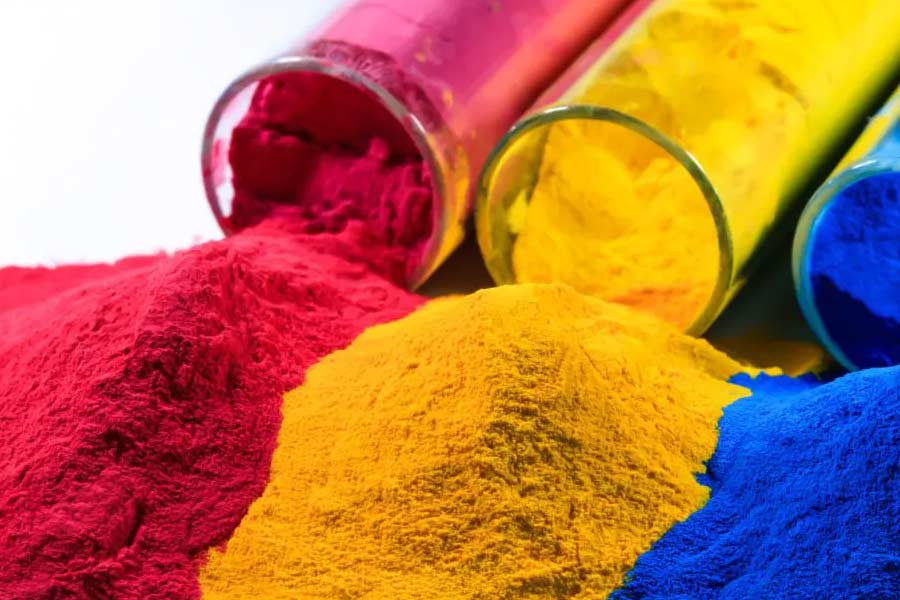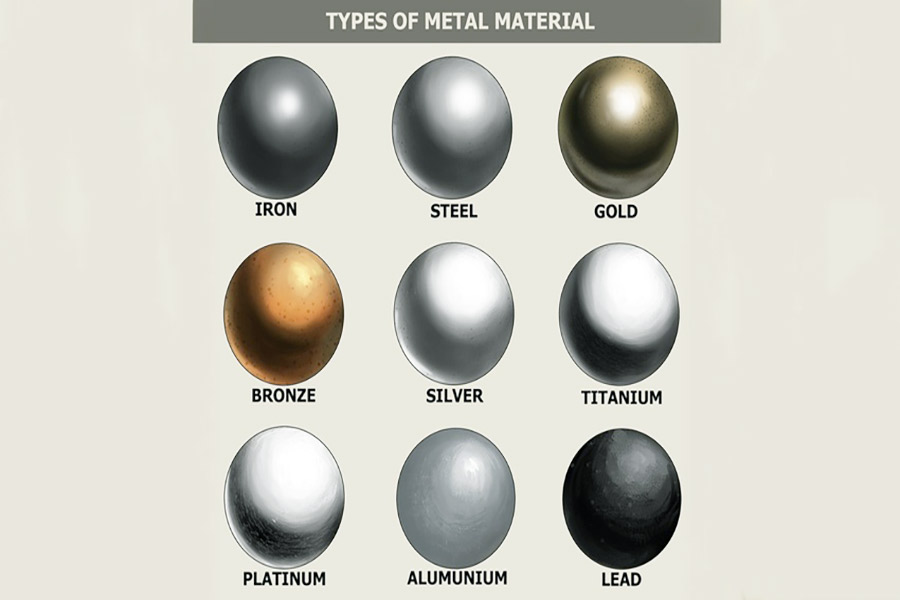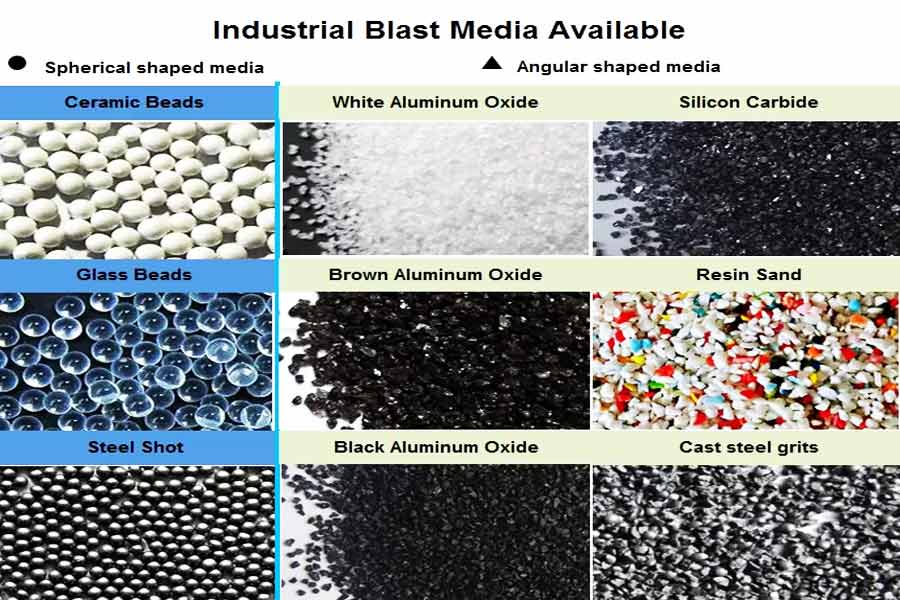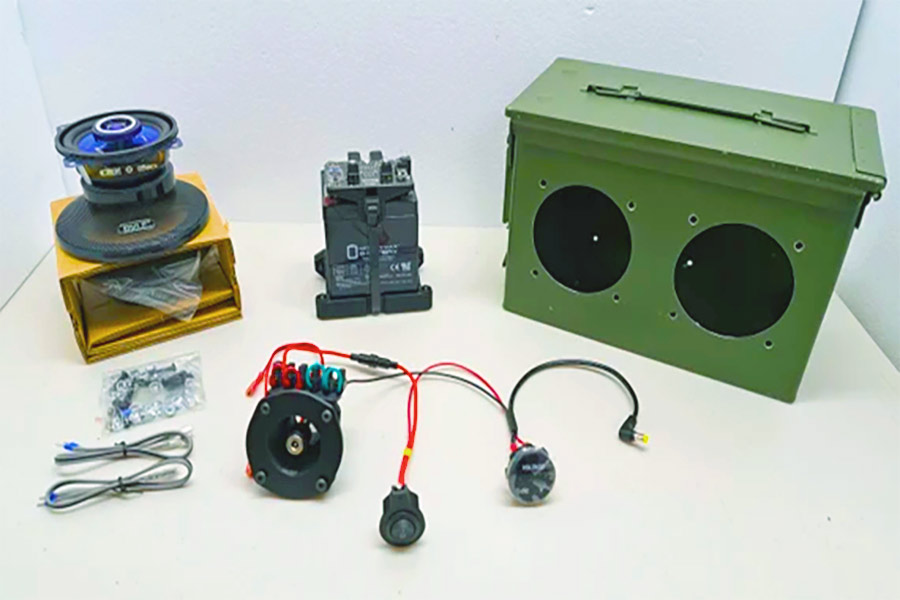In manufacturing, the performance of parts is affected by many factors such as design and processing. But the final layer ofsurface finishing,which we often compare to the "outer coat" of the product, has a role far beyond beauty. It directly determines the wear resistance, corrosion resistance and service life of the parts, and is a key link in performance. There are many methods, but the core lies in the materials used.
I often face such choices:
- Which powder coating can provide the best wear protection?
- What is the coating metal to achieve the surface of the shiny chrome effect?
- What is the core formula in the treatment fluid to achieve the strict military anti-rust standards?
Choosing the rightsurface finishing materialis to choose this crucial "outer coat" for the product. It not only shapes the appearance texture, but also is the root of the product's inherent reliability and long-term service ability. Today we will focus on these decisive materials.
Summary of Core Answers:
| Material category | Typical materials | Major role | Applicable process |
| Additive class (coating) | Epoxy resin, polyurethane, nylon powder. | Provide color, protection, and special functions (insulation, wear resistance). | Spray paint and powder. |
| Additive materials (metal) | Nickel, chromium, zinc, gold, tin. | Provide conductivity, corrosion resistance, decorative properties, and weldability. | Electroplating and chemical plating. |
| Cutting/reshaping type (abrasive) | Aluminum oxide, glass beads, diamond. | Remove burrs, create textures, and improve smoothness. | Sandblasting, polishing, and grinding. |
| Conversion category (chemicals) | Nitric acid, chromate, phosphate. | Generate a new protective film (chemical conversion film) on the surface of the substrate. | Passivation, phosphating, and blackening. |
This article will answer your questions:
- This article will help you understand what materials are used in surface finishing.
- From commonly used powder coatings and electroplating layers to advanced PVD targets.
- We will combine a real case to explain how to choose the most suitable material combination for a series of products.
- Finally, let's talk about the high-frequency questions about material selection that everyone often asks.
Why is This Guide Worth Your Time?
At JS, we "deal" with these surface finishing materials all day long. This is not something that can be done just by looking up the manual. We have personally tested which brand of polyester powder is the most resistant to fading in the sun, and verified which formula of passivation liquid has the best effect on 316 stainless steel. Over the years, we have accumulated amaterial databaseof more than 3,000 successful projects, which is the confidence we have to give you a reliable solution.
The things in this guide are all problems we have actually solved: such as finding a coating for medical devices that can withstand repeated high-temperature sterilization, or choosing an electroplating layer for precision circuits that is both rust-proof and does not interfere with signals.
We don't talk nonsense, we only share the real experience we have learned in the workshop.
"Just like Professor Harry Bhadeshia (Cambridge University/Fellow of the Royal Academy of Engineering), a master in the field of materials, often emphasizes: the core of materials science is the science of solving practical problems."
We deeply agree with this, and this guide is aimed at solving your practical problems.
Coating Materials: The "Outer Coat" and "Armor" of Products
I am in JS Company, mainly responsible for material selection. In my opinion, coating is like the "outer coat" and "armor" of products. Adding a layer of new material directly to the surface can not only protect it, but also make it look better.This is our most commonly used type of materialand plays a core role in thesurface finishing process. Below I will introduce several mainstream coatings in three points and share my experience in material selection:
Paints coating
This is like the paint we are familiar with, mainly a liquid mixed with resin (such as epoxy, acrylic, polyurethane), pigment, solvent and additives. When choosing, I usually recommend the following:
- Epoxy paint: It has super strong adhesion and is not afraid of chemical corrosion. It is a good helper for primer or protecting factory equipment.
- Polyurethane paint: It has first-class ability to resist sun and rain, and its color lasts for a long time and is not easy to fade. It is often used on the exterior of cars oroutdoor facilities.
- Acrylic paint: It dries quickly, has bright colors, is environmentally friendly (especially water-based), and is very common in consumer electronics and ordinary industrial products.
Powders coating
This kind of paint is a dry powder, and its ingredients are pure resin, pigment and additives, without water. It is widely used in surface finishing engineering. How to choose?
- Epoxy powder: The characteristics are similar to epoxy paint, but the coating is thicker and more protective.
- Polyester powder: It has balanced performance in all aspects, especially better outdoor weather resistance than epoxy powder, andis currently the most used powder coating.
- Nylon powder: Super wear-resistant and impact-resistant, with low surface friction, especially suitable for slide rails, gears and other places that need to be frequently moved but are afraid of wear.
Targets for PVD/CVD coating
These are high-purity metal or ceramic blocks, such as titanium nitride (TiN), diamond-like carbon (DLC), chromium (Cr), etc. They are used in more precise surface finishing processes (such asvacuum coating). Key to material selection:
- Titanium nitride (TiN): Golden color, extremely high hardness, very wear-resistant, often used on the surface of tools and drills.
- Diamond-like carbon (DLC): Pure black, extremely low surface friction and high hardness, especially suitable for demanding parts such as engine piston rings or precision molds.
"The right coating can greatly improve the life and appearance of the product - don't underestimate this layer of "armor"! As an engineer at JS, I suggest that you consult us according to your needs: We provide professional advice and help you customize the best surface solution. Contact us now to optimize your product together!"

Electroplating and Chemical Plating: Giving the Magic of "Turning Stone into Gold"
I am in the workshop and laboratory every day, and I come into contact with various metal surface finishing techniques. Simply put, it is to use electricity (electroplating) or chemical reaction (chemical plating) to make metal atoms grow layer by layer on the surface of parts like building blocks. This is not a magic trick, but a real core technology of plating and surface finishing, which can instantly give ordinary materials super powers such as rust resistance, wear resistance, and conductivity!
Functional coating: practical and durable are the hard truths
(1) Zinc:
This is our most commonly used "steel guard". Its principle is "sacrificial anode" protection. The zinc layer corrodes before the steel matrix, thereby protecting the substrate. Low cost and reliable protection effect, such as screws, bolts, outdoor guardrails and other wind and rain parts, galvanizing is the first choice.Our JS often helps customers do this.
(2) Nickel:
- It is both wear-resistant and resistant to moderate corrosion. In the electroplating process, it is often used as the base layer for the more precious chromium layer to ensure the bonding strength, and can also be used directly as the final coating.
- It is particularly worth mentioning that chemical nickel plating (electroless nickel) does not require electricity, and the coating thickness is extremely uniform. No matter how complex your parts are or how deep holes and grooves there are, they can be perfectly covered. It is particularly suitable for precision parts or scenes that require uniform protection.
(3) Tin:
Mainly safe and reliable. It is non-toxic and harmless, and has first-class welding performance. Therefore, it is widely used in food contact containers (such as the inner wall of cans) and electronic components (such as PCB pads), and it must be safe and easy to weld.
Decorative coating: taking into account both beauty and performance
(1) Chromium:
This thing looks really beautiful after plating, with a mirror-like gloss, and looks classy. It is also very hard and wear-resistant.
There are actuallytwo types of chrome plating that we commonly see:
- One is thin decorative chrome, which is mainly used on parts that need to look good.
- The other is thick hard chrome, which is not only eye-catching, but also very wear-resistant and scratch-resistant.
(2) Gold and Silver:
They are "noble" plating materials. The conductivity is almost the best, and they will barely oxidize and discolor, and the signal transmission is precise and stable. So for thoseelectronic connectorswith extremely high requirements, precision instrument contacts, and even high-grade jewelry, they are the right choice, with stable performance and color fastness.
(3) Copper:
Do not underestimate it. In electroplating, copper is commonly employed as "base". Why?
- Because it has very good adhesion to the substrate and is a good conductor. Plating a layer of copper first is like providing a good foundation for subsequent plating (such as nickel or chromium) so that adhesion and performance of the overall plating are more guaranteed.
- Of course, its warm retro copper color is also very refined, and it also looks wonderful when used on some ornament parts or music instrument parts.
"Mastering electroplating and chemical plating is like being a metal transformation wizard that makes product performance and appearance magical. At JS, we have been working diligently on metal surface finishing operations for decades, and we are material selection and process control veterans. Don't panic, call me or the JS team immediately!"

Subtractive and Transformational Materials: Reshaping the Surface from the Inside
Unlike electroplating or coating, this technology does not "apply a layer of outer coating" on the parts but actually grinds or chemically alters the surface of the parts itself. The following is an overview of core materials in two points:
Mechanical treatment abrasives: Precise "grinding" of the surface
- Aluminum oxide is a panacea, with high hardness and strong grinding force. It is absolutely right to use it for sandblasting and grinding to remove burrs. It works very well and can also make the surface rougher for subsequent processing.
- Glass beads are more "gentle" in their work. The surface it produces is a delicate and uniform matte effect (we often call it satin), and it basically does not make the size of the parts smaller, so I often choose it forpolishingsome precision parts without damaging them.
- If you encounter particularly difficult-to-grind materials such as cemented carbide or ceramics, you have to use silicon carbide. This guy is harder and sharper than aluminum oxide, and is specifically designed to deal with these "hard bones" and can chew them.
- Finally, there are natural abrasives such as walnut sand and corn cobs, which are relatively soft in texture. They are mainly used for cleaning, such as carbon deposits and oil stains on precision parts such as turbine blades. They can remove dirt without scratching the parts themselves, which is quite practical.
Chemical converter: Stimulate "surface potential"
Nitric acid or citric acid are powerful tools for stainless steel passivation.
What does it do?
- It removes the "free iron" on the surface that is prone to rust through chemical reactions, exposing the chromium underneath and forming a stable and dense chromium-rich protective layer. Stainless steel treated in this way has much stronger anti-rust ability and is more durable.
- As for phosphate (what we often call phosphating agent), it can be regarded as a good partner for steel parts before painting orpowder coating.
Why is it a powerful tool?
- Because it can form a phosphating film full of tiny pits on the surface of steel. These pits and bumps can just allow the subsequent paint or powder coating to "grasp" the substrate firmly, and the adhesion is directly improved by one level, so that the paint is not easy to fall off.
- There are also alkaline oxidants, which are mainly used to blacken or blue steel. It can form a black and dense iron oxide film (the main component is Fe₃O₄) on the surface. This layer of film itself can provide some basic anti-rust ability, which is not particularly strong, butthe key is that it can create a specific black appearance.Sometimes customers recognize this color, or want to save some costs, so it is quite appropriate to use it.
"Irrespective of physical reduction or chemical conversion, it is an essential tool to optimize surface performance. JS is proficient in various surface treatment processes, including pre-treatment for plating & surface finishing. If your product needs to improve wear resistance, corrosion resistance, cleanliness or lay a good foundation for subsequent coating, please feel free to contact our engineering team forprofessional solutions!"

Practical Case Analysis: 3 Types of Surface Treatment Solutions for Bluetooth Speakers
Recently, we helped customers plan the surface finishing solutions for high, medium and low-end aluminum alloy Bluetooth speakers.The core idea is to use material selection to widen the product gap and control costs.
Customer challenge: define the appearance and texture of the Bluetooth speaker series (basic/Pro/ultimate version)
The customer wants to make high, medium and low-end Bluetooth speakers, and the main body is aluminum alloydie casting. The problem is: how to make them look and feel obviously different through the surface treatment of the shell, and the sense of grade is widened, and the cost needs to be controlled. This is the art of material selection.
- Basic version: The budget is tight, it must be durable, and the appearance must be simple and generous.
- Pro version: It must have a high-end and metallic feel, it is best not to leave fingerprints, and the color selection must be rich.
- Ultimate version: There is only one goal - luxury! It must feel special, and it must be super wear-resistant and stand the test of time.
Solution Choice and Evaluation: A Smart Match Through "Material Selection"
As a JS engineer, I was responsible for the material decision-making process. I match materials precisely for different gears. Among them,the tools and equipment for surface finishing are the most vital ones.For example, in Pro version, we use sandblasting assurface finishing toolsto handle details. In the Ultimate version, the PVD process is established on professional surface finishing equipment (vacuum coating machines) to provide high performance. The below table summarizes my last choice:
| Product version | Surface treatment process | Core material selection | Reason for selection |
| Basic version | Electrostatic powder spraying. | Polyester powder. | The lowest cost, most mature process, thick coating that can cover small defects in die-casting parts, durable enough, and completely suitable for daily use. |
| Pro version | Sandblasting+anodizing. | 180 # glass beads+sulfuric acid+anode dye. | Sandblasting creates a delicate matte effect, similar to high-end laptops. Anodic dyes make colors rich (such as deep space gray and silver), and the protective layer is wear-resistant and fingerprint resistant, balancing texture and protection. |
| Flagship Edition | CNC highlight+PVD coating. | Diamond cutting tool+titanium nitride or DLC target material. |
CNC highlights create a mirror effect at the edges, creating a luxurious feel.
PVD coating forms a ceramic like hard coating, with a warm and super wear-resistant feel (far exceeding anodizing), highlighting the brand's high-end.
|
Final result: Building a correct product matrix
This approach was successful, as it placed different consumer groups in a correct position:
- Cost control was a success: entry-level model uses polyester powder, while the cost of surface finishing is reduced to the target level (10% below the budget), saving consumers money.
- Great value enhancement: The Pro version brings color SKUs such as deep space gray and silver by adding anode dyes, which doubles the product's appeal and sales 20% higher than expected.
- Brand technology benchmark:PVD coating'sflagship version has caused heated controversy in the tech media, as it has become a synonym for brand flagship, and consumers use it as a market benchmark.
Core finding:Surface finish materials are akin to an engineer's "color palette" - polyester powder is the base color, anodizing is the gradient layer, and PVD coating is gold powder. Only by precise matching can the product's "flavor" be adjusted at a fair price.
"From economical powder spraying to flagship PVD, the selection of surface treatment tools and equipment directly determines the product's height. JS is good at matching the best process chain for products with different positioning. If you have a product plan with layered positioning, contact our engineering team immediately to customize a full-process solution from materials to equipment for you!"

FAQ - Answer Your Material Selection Confusion
How to define "brushed metal finish definition"? What materials are used for it?
Everybody wishes to know what "brushed metal finish" is. It literally looks like there are thin, even silk textures all over the metal surface, as if a brush has been brushed in one direction. The trick of this finish is not to put something on the metal, but to machine the material down and shave off a thin layer of surface metal with the tool.
To make this effect, the core "material" is actually the grinding tool itself. I most often use a sanding belt wrapped with hard aluminum oxide abrasive particles. During operation, let the sanding belt rotate at high speed, and at the same time let the workpiece move steadily in one direction against the sanding belt. The hard particles on the sanding belt are like countless small carving knives, scratching dense and consistent fine scratches on the metal surface. It is these small parallel scratches that together create the unique soft high gloss and brushed texture.
Simply put: brushed effect = specific tools (sand belts) + one-way scraping action.
Stainless steel is already "stainless", why do we need to passivate it with chemicals?
I am often asked: "Stainless steel does not rust, why do we need to pickle it?" There is a key misunderstanding here.The rust-resisting characteristic of stainless steel is absolutely dependent on the thin chromium-rich oxide film on the surface.
However, during processing (such as cutting and welding), this film is easily damaged and may be stained with impurities such as iron filings. At this time, nitric acid or citric acid used for passivation comes in handy:
- Deep cleaning: effectively dissolves iron contaminants on the surface.
- Promote regeneration: accelerate and guide the stainless steel surface to evenly regenerate a thicker, more stable, and more protective chromium-rich oxide film.
Therefore, passivation is not a redundant step, but a chemical method to repair and strengthen the natural rust resistance of stainless steel. Especially in harsh environments such as salt spray and humidity, stainless steel that has not been passivated will still rust. Passivation treatment is the guarantee for its long-term and stable service.
Both spray painting and powder spraying use "resin", what is the difference between them?
They both use resin as material, butthe form and method are completely different.
- Spray painting uses liquid resin, which is dissolved in solvent like paint. After application, the solvent evaporates and the resin solidifies to form a film.
- Powder spraying uses powdered resin particles, which are electrostatically adsorbed on the surface of the workpiece, and then baked at high temperature to melt into a flat and solid coating.
In comparison, the coating made by powder spraying is thicker, more wear-resistant, and more environmentally friendly because no volatile gases are emitted throughout the process. However, it cannot produce the ultra-thin and delicate effect of spray painting.
Summary
The key tosuccessful surface finishingis tohave a deep understanding of the materials used. Whether it is the paint that determines the appearance, the metal that gives key performance, or the abrasive that treats the surface, the choice of each material directly affects the final effect. This is actually an art of balancing costs, achieving required performance and meeting appearance requirements.
Are you struggling:
► Should I choose powder or electroplating? Which one is more suitable for my product positioning?
► How to use a reasonable budget to make the product appearance and texture stand out?
► There are manysurface finishing equipment companies, who really understands the matching of materials and processes?
Don't let material selection hold you back! At JS, we not only understand theory, but also have accumulated a large number of practical cases.Contact us nowto provide you with a one-stop solution from material testing to mass production.
Disclaimer
The contents of this page are for informational purposes only.JS seriesThere are no representations or warranties, express or implied, as to the accuracy, completeness or validity of the information. It should not be inferred that a third-party supplier or manufacturer will provide performance parameters, geometric tolerances, specific design characteristics, material quality and type or workmanship through the Longsheng Network. It's the buyer's responsibilityRequire parts quotationIdentify specific requirements for these sections.Please contact us for more information.
JS Team
JS is an industry-leading companyFocus on custom manufacturing solutions. We have over 20 years of experience with over 5,000 customers, and we focus on high precisionCNC machining,Sheet metal manufacturing,3D printing,Injection molding,Metal stamping,and other one-stop manufacturing services.
Our factory is equipped with over 100 state-of-the-art 5-axis machining centers, ISO 9001:2015 certified. We provide fast, efficient and high-quality manufacturing solutions to customers in more than 150 countries around the world. Whether it is small volume production or large-scale customization, we can meet your needs with the fastest delivery within 24 hours. chooseJS TechnologyThis means selection efficiency, quality and professionalism.
To learn more, visit our website:jsrpm.com
Resource






